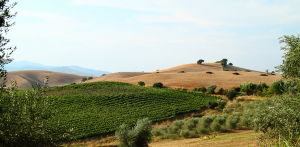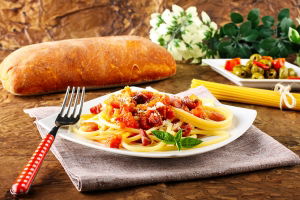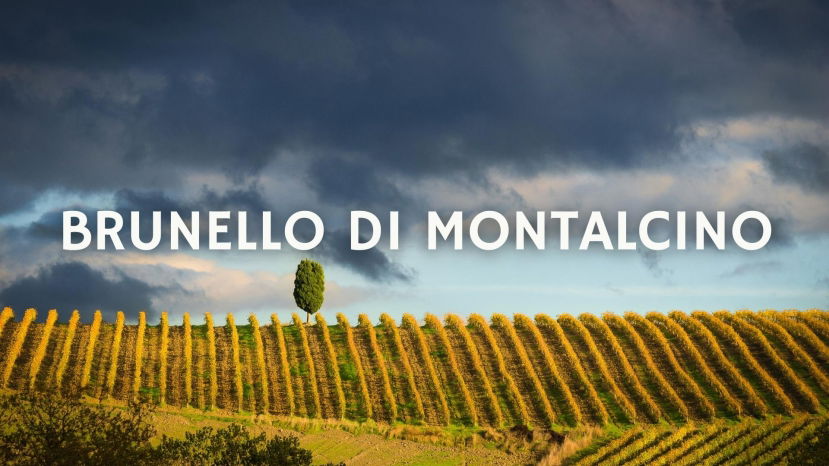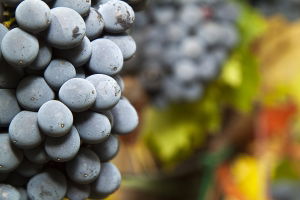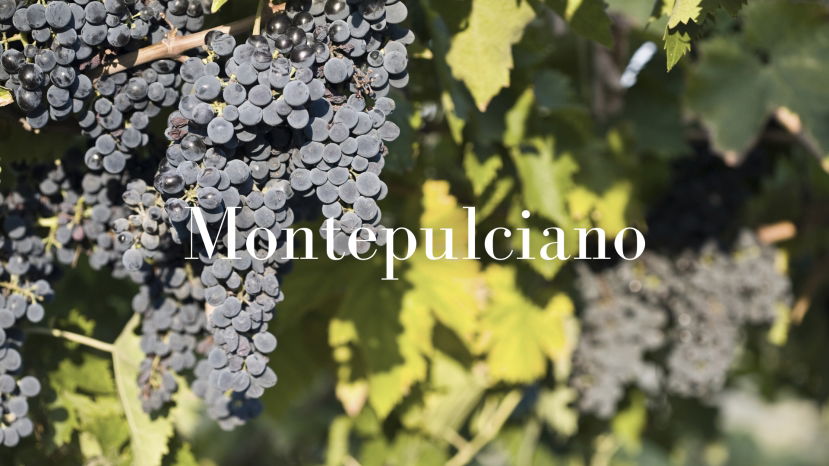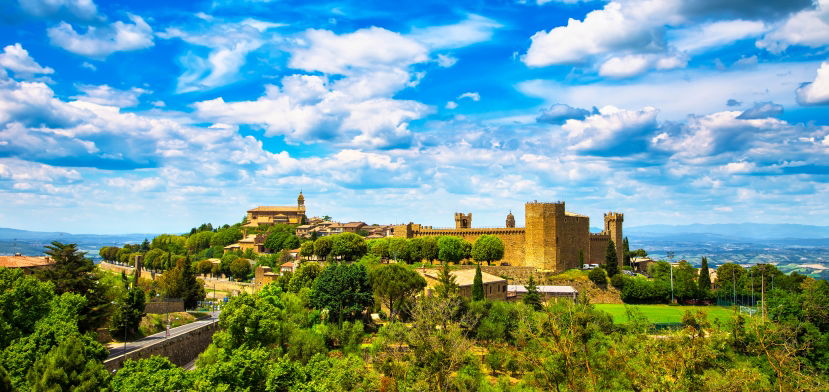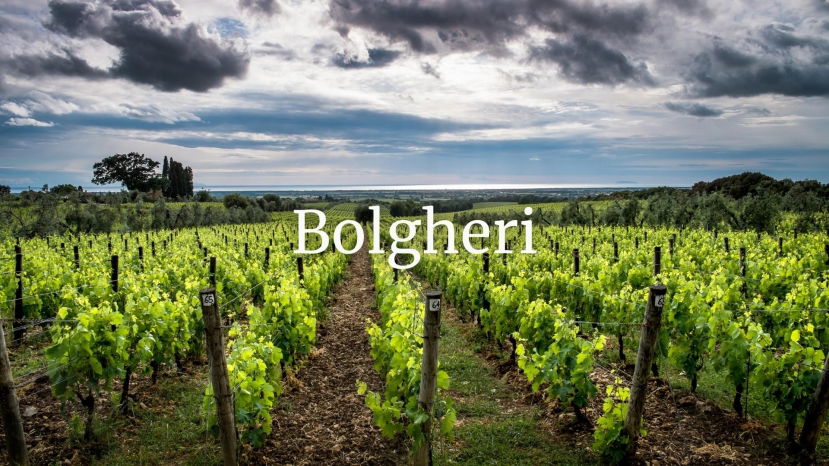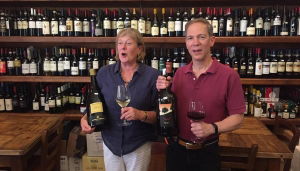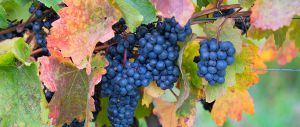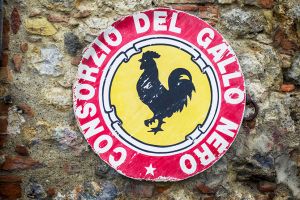BLOG
Tuscany
Mention the red wines of Tuscany and immediately examples such as Brunello di Montalcino, Chianti Classico and Vino Nobile di Montepulciano come to mind. Produced primarily or exclusively from the Sangiovese grape variety, these celebrated red wines truly define this region’s viticultural excellence. Over the last three decades, the distinctive red wines of Bolgheri, crafted from Bordeaux grape varieties from vineyards along Tuscany’s coast, have also become icons of Tuscan wine.
Yet there are other sublime red wines from this region that are notable yet lack the renown of the wines mentioned above. Carmignano, Morellino di Scansano and Montecucco are three other important red wines of Tuscany that reflect a sense of place and represent not only special quality, but impressive value as well.
Recently, Barbara Philip MW hosted a virtual food and wine tour webinar for the Wine Scholar Guild. The cuisine of central Italy is as fascinating as it is delicious. This is where tomatoes and olive oil begin to replace the butter and cream of the north. Heavy, stuffed pastas give way to long pastas and are joined by more vegetables. The food of central Italy reflects the agricultural treasures provided by the warmer climate. Local grape varieties also enjoy their time in the sun, ripening to juicy perfection, creating wines that really reflect their surroundings.
When I first joined the wine industry some 16 years ago, I was thrown in at the deep end specialising in selling the world’s finest wines to the well-heeled customers of Northwest London. In those early days, one of the topics that frequently plunged me under the water was when I had to sound knowledgeable about Italian wines. In my first couple of weeks on the job I was given a great piece of advice by one of my seasoned veteran colleagues: if you know just one
Summary:
In this live one-hour webinar, we explore the origins of Italy’s first-ever DOCG, Brunello Di Montalcino DOCG, where we see Sangiovese reach its full potential. An appellation where history, climate and influence of highly skilled winemakers play key roles in the evolution of its wines.
Matt Kirkland was an attendee of the WSG’s first Study Trip to Tuscany with Jane Hunt, MW. Here, he shares some of the insights he gleaned from the trip.
Quality in wine can be assessed based upon balance, length, intensity, and complexity (and typicity when not tasting blindly). As the workhorse grape of central Italy, Sangiovese had a checkered history relative to quality. It is a high acid grape, with relatively high tannins; and quality demands a balance of these structural components. The goal of this essay will be to discuss the acid/tannin balance, its impact upon quality, and the implications for “mouthfeel” of the resultant wines. The harmonious balance of quality can be achieved with pure Sangiovese (Brunello de Montalcino or some Chianti’s, or with blends as in Chianti or the “Super Tuscans”); the key is taming the interplay of tannin and acid on the palate. The journey through Tuscany is a delectable discovery of vinous diversity, unified by the grape.
“In the bad old days, Sangiovese tended to be overproduced which accentuated its tendency to exhibit high acid and unripe tannins… Sangiovese’s dominant viticultural characteristics are that it can vary as much as Pinot Noir in its sensitivity to place and that it ripens relatively late.” Jancis Robinson, www.jancisrobinson.com/learn/grape-varieties/red/sangiovese
Summary:
Drinking and discovering Montepulciano (the grape) d'Abruzzo is like looking at a painter's palette, so many colors, so many shades and so many possibilities. Montepulciano is one of Italy's most versatile grapes that can produce terrific rosatos, quaffable reds for any occasion but also some of Italy's boldest and age-worthy wines, worth every sip.
Presenter: Ciro Pirone
When the Consorzio Brunello di Montalcino was established in 1967, one year after the wine received DOC status (it became one of the initial DOCG wines in 1980), there were only twenty-five members. Today, there are more than two hundred Brunello producers; given the reputation of this wine for its ability to age for twenty-plus years in the finest vintages, this is hardly surprising.
Summary:
The wines of Toscana’s Montalcino are revered the world over and the price of vineyard land within the Brunello di Montalcino DOCG reflects that renown. However, just a short 30 minute drive from Montalcino lies the largely undiscovered world of Monte Amiata. Previously primarily known, in wine circles, for the important role it plays in sheltering the vineyards of Montalcino from intense summer storms that can develop on the sun-soaked Tuscan coastline, today Monte
“Andreeeeea! There is no plane from Napoli to Ancona!” This was the incredulous cry that I heard from my Campanian friends when I told them how I was leaving their beautiful region to visit Marche. They were sure that when I arrived at the terminal, that what I thought was going to be a plane would, in fact, turn out to be a bus. They were so adamant that no such flight existed that even I began to doubt the authenticity of the travel itinerary I had received. My relief was therefore clearly visible when I was able to check in for my evening flight to Ancona.
Summary:
From its humble beginnings, as a source of simple rosé wines, to its rise to fame, as home to many of Italy’s most famous Super Tuscans, the Bolgheri DOC continues to evolve.
The biggest names are well-recognized on the world wine stage but the terroir of Bolgheri remains unknown to many.
Steeped in history and culture, the region boasts
Master of Wine Jane Hunt is interviewed by Decanter Magazine’s Andrew Jefford about Tuscany and its wines. Jane has a long, distinguished career in various aspects of the wine trade. She leads the Wine Scholar Guild immersion tours through some of the legendary Tuscan wine estates.
Summary:
From their genesis in the late 1960s to their most modern iterations, Super Tuscans have enjoyed an uninterrupted reign on the international scene. Initially, production style trumped terroir, but now, thanks to viticultural improvements combined with the effects of climate change, we see the evolution of one winemaker’s initial hunch into a family of world-class wines. Characterised by their Bordeaux influences and divergence from traditional Italian
Are you looking for the best Italian red grapes? The wonderful thing about Italian red grape varieties is that they are distinctly Italian. Plenty of winegrowers around the world have made attempts at growing Sangiovese, Nebbiolo and Barbera, but few have come even close to matching the results of these grapes’ native soils. As a rule, Italian grape varieties don’t care to leave Italy, and who could blame them? Completely at home in their places of origin or tradition, each Italian red grape has evolved and adapted in perfect harmony with their surroundings.
The Gallo Nero (Black Rooster) was the historic symbol of the League of Chianti and has become the symbol of the wines of Chianti Classico. The Black Rooster symbol is linked to a medieval legend that takes place during the time of open hostilities between Firenze and Siena for control of the Chianti territory.
Italy's white wines are as diverse as the country's reds. There is an Italian white wine with a trove of native varieties to fit every budget and occasion. Unfortunately, there are so many choices that shopping for Italian white wine can be overwhelming. It doesn't help matters that many of the white grapes have similar-looking names. However, you don't have to memorize an encyclopedia to find the perfect wine for dinner. Knowing a few essential wines will ease the confusion and simplify the shopping trip (hint, if the grape or wine name has a "v" in it, you will probably love it.)
Grapes for Vin Santo Drying in the Vinsantaia
One of the most characteristic wines of Toscana is Vin Santo. This passito is an ancient and traditional specialty produced throughout the entire region. Its origin dates back to the Middle Ages, but the prototype for this style of wine can be traced back to the Greeks and the Romans.
Most Vin Santo is made from white grapes, typically Trebbiano Toscano and Malvasia Bianca Lunga. It can be made from just one of these grapes but is more commonly a blend of the two. Trebbiano provides acidity while Malvasia provides body, texture and perfume. A rare, pink Vin Santo called Vin Santo Occhio di Pernice (“partridge eye”) is made from red grapes, usually Sangiovese. Only a few producers make this pink version.

